
Nowadays, nearly everyone has a GPS or some sort of navigation app. But it’s still important to know how to ask for directions in Turkish because locals can give you valuable information about shortcuts that could save you time. Plus, it’s a good excuse for small talk and practicing speaking in the target language. Not to mention the fact that you can’t always rely on having a good internet connection or GPS signal! You may end up relying on your directions in Turkish vocabulary more often than you think…and directions in Turkish lessons like this one are a great place to start.
 Table of Contents
Table of Contents
- Basic Question Form: “….. Nerede?”
- Cardinal Directions in Turkish
- Major City Directions in Turkish
- Getting Places – How to Ask and Give Directions in Turkish
- Most Common Turkish Directions – How to Understand Them
- Asking for Directions in Turkish on the Street – Urban Terminology
- Points of Reference for Giving Directions in Turkish
- Dialogue Playouts
- How to Thank Someone for Giving Directions in Turkish Words
- The Not-So-Helpful Direction-Giver
- Continue to Learn About Directions in Turkish
1. Basic Question Form: “….. Nerede?”
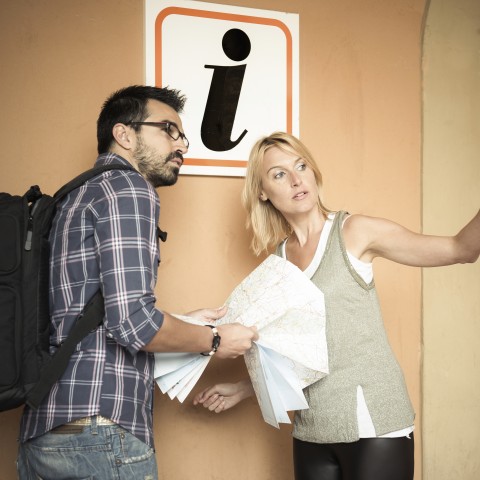
Turkish is a straightforward, easy-to-learn language. Grammatically, it’s very consistent, meaning you don’t need to worry about irregularities in the language. Learning about basic directions in the Turkish language is a cinch.
The first phrase you need to know is: “(location) nerede?“ meaning “Where is [location]?”
It’s that easy. Just add any place you need to find before the word nerede and you’re good to go, literally!
Here are some examples:
- (Basic sentence)
Kapalıçarşı nerede?
“Where is Kapalıçarşı – the Grand Bazaar?”
- (Advanced/polite sentence)
Pardon, Kapalıçarşı nerede, acaba?
“Pardon me, where is Kapalıçarşı?”
As you can see, adding a pardon or “pardon me” to the beginning of a sentence, and ending with an acaba meaning “I wonder,” will make you sound polite.
2. Cardinal Directions in Turkish

Let’s start with how to say “map” in Turkish. Harita (literally meaning “map” when translated) can be used to refer to traditional printed maps as well as digital ones. The English word “navigation” has been adapted into Turkish as navigasyon. “Application/app” can be used in Turkish, as well as the Turkish word for it which is uygulama. Most people will understand the English terms used for such technology. A “navigation app” would be navigasyon app or navigasyon uygulamasi.
Although Turkish people don’t readily refer to cardinal directions, it’s still good to know them just in case. Turks usually refer to places according to their proximity to other places: forty minutes after you pass a certain city, or five minutes down the road. Words used for direction in the Turkish language are usually related to position rather than geographical direction.
Here are the basic cardinal directions in Turkish:
- Kuzey “North”
- Güney “South”
- Batı “West”
- Doğu “East”
1- Where is Turkey on the Map?
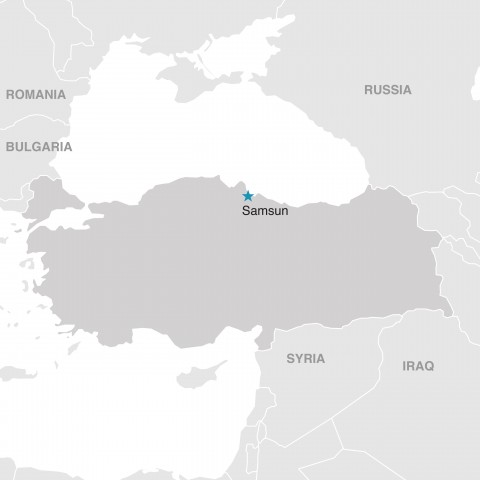
Before we go any further, let’s talk a bit about the location of Turkey and its most popular cities, to get a sense of direction from the start. Turkey is located between Asia and Europe, and it’s referred to as Asia Minor. To its north is the Black Sea and to its south is the Medditerranean. The Aegean lies on its western coast, while the east and southeastern parts of Turkey share borders with Syria, Iran, Iraq, and Russia.
There are seven regions in Turkey which are named by their geographical location. Here, we’ve also listed some major cities found within these regions:
- The Marmara Region (İstanbul; Edirne)
- Aegean Region (İzmir; Efes; Muğla)
- Mediterranean (Antalya; Kaş; Kemer)
- Black Sea Region (Sinop; Trabzon; Rize)
- Central Anatolia Region (Ankara; Eskişehir; Kayseri)
- Eastern Anatolia Region (Erzurum; Erzincan; Ağrı)
- Southeastern Anatolia Region (Diyarbakır; Gaziantep; Urfa)
You may want to ask which region a city is in. There are plenty of tourist attractions in each one of these regions, although the Marmara Region and the coastal Aegean and Meditteranean regions are the most popular. If you’re curious, you can also learn more about the geographical regions of Turkey.
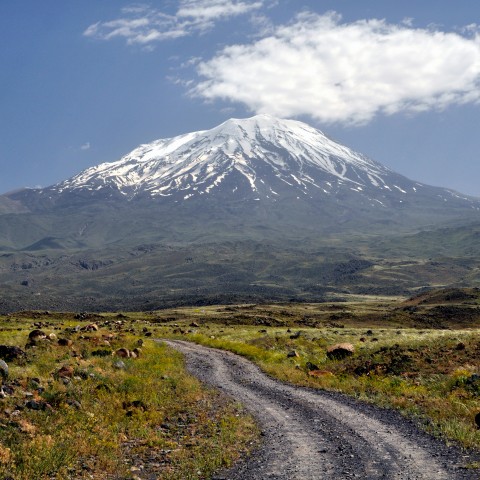
2- Talking about Directions on a Map
İzmir is in the western part of Turkey; Turkey is to the east of Greece; Kuşadası is on the southern side of İzmir.
So, for example, to ask if Antalya is in the northern or southern part of Turkey, you would say:
Antalya nerede? Kuzeyde mi, güneyde mi? meaning “Where is Antalya? In the North or South?”
Or
İzmir nerede? Türkiye’nin batısında mı? meaning “Where is Izmir? Is it in the western part of Turkey?”
3- Combinations of Cardinal Directions in Turkish
When someone’s giving directions in Turkish, phrases involving a combination of cardinal directions may come up. Here are some examples of things you may hear:
- Kuzeydoğu (northeast)
Çanakkale Türkiye’nin kuzeydoğusundadır.
“Çanakkale is in the northeastern part of Turkey.”
- Güneydoğu (southeast)
Adana Türkiye’nin güneydoğusundadır.
“Adana is in the southeastern part of Turkey.”
- Güneybatı (southwest)
Manisa Türkiye’nin güneybatısındadır.
“Manisa is in the southwestern part of Turkey.”
- Kuzeybatı (northwest)
Şile Türkiye’nin kuzeybatısındadır.
“Sile is in the northwestern part of Turkey.”
3. Major City Directions in Turkish
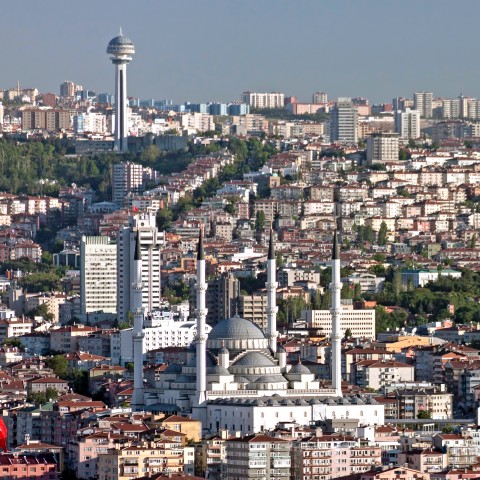
Let’s do a little exercise. Ankara, Antalya, and Istanbul are some of the major cities and centers of interest for tourists. See if you can figure out which of the three cities mentioned above is being described in these sentences. The answers are at the end of the article, but don’t scroll down yet!
1. Türkiye’nin güneyinde bir şehirdir. “This is a city in the south of Turkey.”
2. Türkiye’nin batısındadır. “It is in the western part.”
3. Türkiye’nin ortasındadır. “It is in the central part of Turkey.”
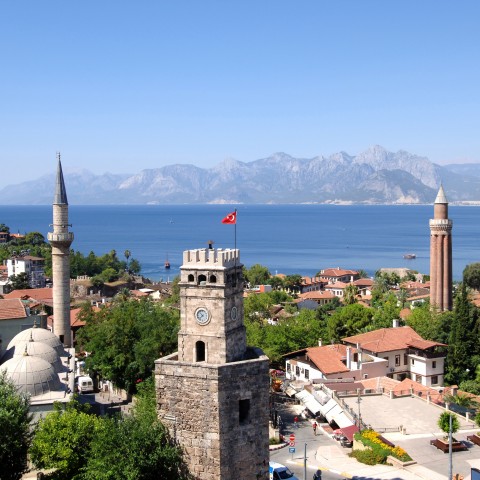
4. Getting Places – How to Ask and Give Directions in Turkish
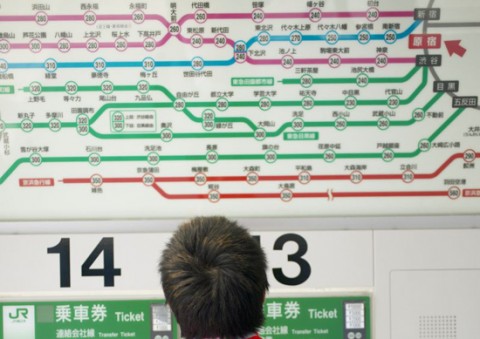
Most likely, you won’t have your personal car with you on vacation. You’ll either be taken around in a tour bus or left to your own devices, such as walking and/or public transport. Here are some examples of how to ask the best way to get somewhere. After all, why learn Turkish directions if you don’t know how to apply them?
Notice that, especially in large metropolitan cities like Istanbul, there may be more than one way to get somewhere (for example, by metro, ferry, or bus).
1- How to Get to Ephesus
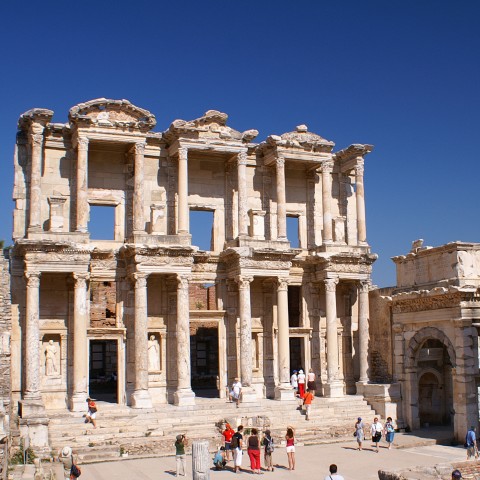
A family on tour would like to visit Ephesus while they’re in the Aegean region. But they don’t have enough time to take the “Blue Cruise” tour. They just want to go directly to Ephesus by land. The lady takes matters into her own hands and asks the hotel manager for directions:
Lady:
Affedersiniz…Biz Efes’e gitmek istiyoruz.
“Excuse me…we want to go to Ephesus.”
Manager:
Tabii, hemen Mavi tura yazdıralim sizi.
“Of course, let’s sign you up for the Blue Cruise right away.”
Lady:
Hayır, hayır. O kadar zamanımız yok. Karadan nasıl gideriz?
“No, no. We don’t have that much time. How can we get there by land?”
Manager:
Tabii, anlatayım…Önce bir taksi tutup gara gidin. Oradan Efes yazan otobüslerden birine binin.
“Of course, I can direct you…firstly, take a taxi cab to the terminal. Get on a bus that has Ephesus written on it.”
Lady:
Evet…
“Yes…”
Manager:
Son durakta inin. Orada bir park olacak, onun arkasında hemen.
“Get off at the last stop. There is a park there, it is right behind that.”
Lady:
Teşekkür ederim.
“Thank you.”
5. Most Common Turkish Directions – How to Understand Them

If a Turkish person starts giving you directions, make sure to follow his/her hand gestures along with the words. Like most Mediteranean people, the Turks rely a lot on hand movements to convey a message. It might help you keep the directions in your mind if you see the route played out, too.
In addition to the phrases above, keep in mind the landmarks and common places we covered earlier. Better still, have these written down as you’ll probably hear these phrases a lot. A little pocket dictionary will also come in handy.
6. Asking for Directions in Turkish on the Street – Urban Terminology

While in Turkey, whether you’re visiting or staying for a longer time, you most likely won’t need a car. Public transport is common in Turkey, and busses and ferries are usually crowded.
As a pedestrian, you’ll need to know some basic urban terminology, such as the Turkish word for traffic light (trafik lambası), pedestrian crossing (yaya geçidi), newsstand (büfe)…etc. Here are some samples with dialogue you’re likely to hear from day-to-day.
- Pardon, yaya geçidi nerede acaba?
“Pardon me, where is the pedestrian crossing, I wonder?”
- Büfe nerede?
“Where is the newsstand?”
- Trafik lambası nerede?
“Where are the traffic lights?”
7. Points of Reference for Giving Directions in Turkish
Because Turkish people will often give you directions in reference to another place or landmark, it will be helpful to know a few of these commonly used phrases. Here are some words used while giving directions, with some samples of these phrases used in sentences along wıth location words:
- arkasında “Behind” in Turkish
- önünde “In front of” in Turkish
- sağda “To the right” in Turkish
- solda “To the left” in Turkish
- köşede “At the corner” in Turkish
- Durak (bus stop)
Duraktan sonra sağa dön.
“Turn right after the bus stop.”
- Bina (building)
Binanın arkasında.
“Behind the building.”
- İstasyon (train station)
İstasyonun karşısında.
“Across from the train station.”
- Banka (bank)
Bankanın önünde.
“In front of the bank.”
- Park (park)
Parkın içinden geç, sola dön.
“Go through the park, then turn left.”
- Meydan (city square)
Meydanın öbür tarafında.
“On the other side of the city square.”
- Belediye binası (city municipal)
Belediye binasını geç, üçüncü bina.
“It’s the third building after you pass the city municipal building.”
- Postane (post office)
Postane hemen köşede.
“The post office is right on the corner.”
8. Dialogue Playouts
1- By foot:
Barbara:
Pardon, Ayasofya’ya nasıl giderim?
“How can I get to Hagia Sophia?”
Man on street:
Düz git, sonra sola dön.
“Go straight, then turn left.”
2- By bus:
Jacob:
Affedersiniz, Efes’e nasıl giderim?
“Excuse me, how can I get to Ephesus?”
Local lady:
510 numaralı otobüse bin. Meydanda in. Kaçırmazsın.
“Get on the 510. Get off at the square. You can’t miss it.”
3- Multiple transportation:
Larry:
Bakar mısınız? Buradan İzmir’e nasıl giderim?
“Could I have your attention / Excuse me? How do I get to Izmir from here?”
Man at ticket booth:
670 numarali otobüse bin. Limanda in. Oradan İzmir yazan bir vapura bin.
“Get on the 670. Get off at the pier. Get on a ferry that has İzmir written on it.”
9. How to Thank Someone for Giving Directions in Turkish Words

A general teşekkür ederim meaning “thank you” is sufficient. But if you would like to add a “you have been very helpful” or “thanks for the information,” here are some phrases you can use:
- Yardımlarınız için teşekkür ederim!
“Thanks for the help!”
- Çok yardımcı oldunuz!
“You have been very helpful!”
- Çok sağ olun./ Çok teşekkür ederim.
“Thank you very much.”
Body language: You can press your hand (open) against your heart to symbolize a heartfelt thank you or express your gratitude. Eyvallah is another traditional way to say a heartfelt thank you. It means
“I thank God first, then you.”
10. The Not-So-Helpful Direction-Giver

Turkish people (especially males) are addicted to giving directions. This may seem like a plus, but beware of the extra-enthusiastic or not-so-sure individuals. They’ll usually make up a route just to seem helpful, or they’ll give you too many details about how you can avoid the bridge traffic (Bosphorus bridge) and reach your destination in miraculous time. These are all well-intended suggestions (for sure); just use your best judgement when in doubt. Thank them and ask someone else for a second opinion!
11. Continue to Learn About Directions in Turkish
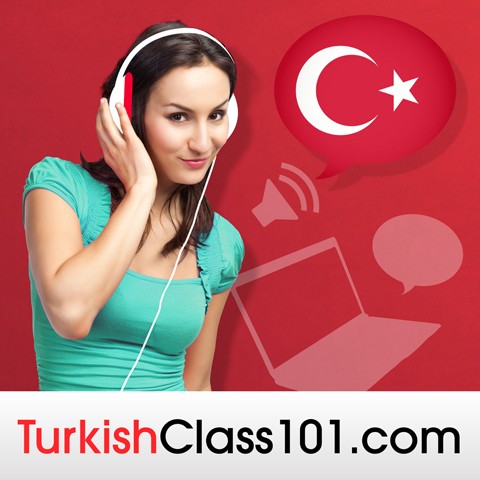
Turkey is a lovely place to visit. Make sure you know how to get from A to B before you venture out.
Why not learn a few phrases to make your holiday a more enjoyable and well-planned one? Visit
TurkishClass101 for more direction words and phrases to use on your visit. Keep up the good work!
Before you go, let us know in the comments how confident you feel about directions in Turkish now! Is there anything you’re still having a hard time with in your directions in Turkish language-learning? We look forward to hearing from you!













